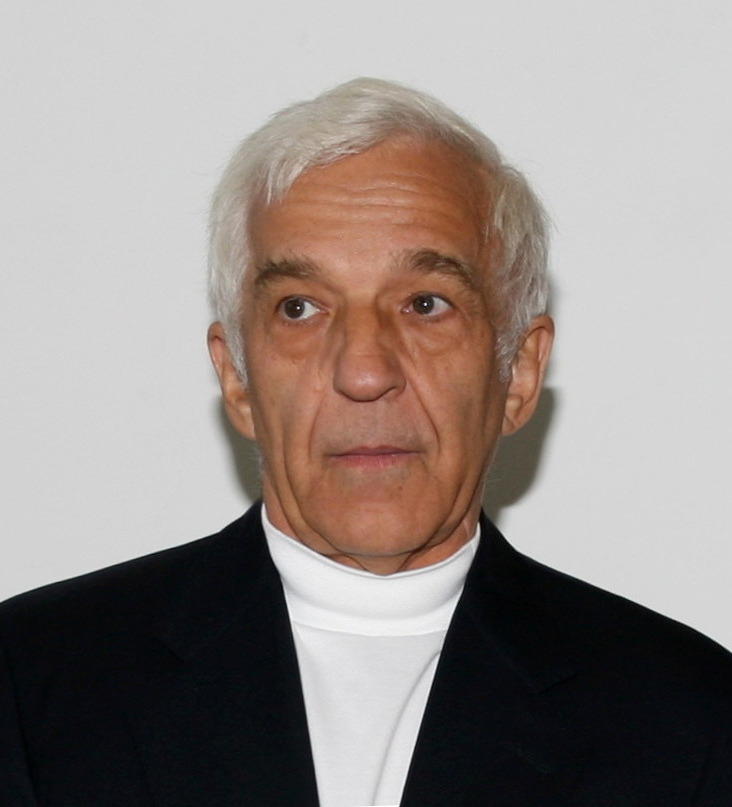|
Meggen LU
Meggen is a municipality in the district of Lucerne in the canton of Lucerne in Switzerland. History Meggen is first mentioned in 1226 as ''Meken'', though a 14th Century copy of an older document mentions ''in Acta Murensia'' around 1160. Geography Meggen has an area of . Of this area, 47.6% is used for agricultural purposes, while 23.7% is forested. Of the rest of the land, 28.5% is settled (buildings or roads) and the remainder (0.3%) is non-productive (rivers, glaciers or mountains). , 23.69% of the total land area was forested. Of the agricultural land, 41.6% is used for farming or pastures, while 6.06% is used for orchards or vine crops. Of the settled areas, 20.25% is covered with buildings, 0.41% is industrial, 0.69% is classed as special developments, 1.79% is parks or greenbelts and 5.37% is transportation infrastructure. Of the unproductive areas, and 0.14% is other unproductive land. The municipality is located on the Küssnacht arm of the Lake of Lucerne. ... [...More Info...] [...Related Items...] OR: [Wikipedia] [Google] [Baidu] |
Lucerne (district)
Lucerne District (german: Luzern) is a former ''Amt'' (administrative district) of the Canton of Lucerne, Switzerland. It had a population of 176,710 (as of 2013) and consisted of 18 municipalities, of which the city of Lucerne is the largest and the district capital. On 1 January 2013 the Amt was divided into two Wahlkreis, Lucerne-Stadt and Lucerne-Land.Nomenklaturen – Amtliches Gemeindeverzeichnis der Schweiz accessed 9 February 2013 : 1992/97 survey gives a total area of without including certain large lakes, while the 2000 survey includes lakes and gives the higher value. : Includes the area of which merged into ... [...More Info...] [...Related Items...] OR: [Wikipedia] [Google] [Baidu] |
Swiss People's Party
The Swiss People's Party (german: Schweizerische Volkspartei, SVP; rm, Partida populara Svizra, PPS), also known as the Democratic Union of the Centre (french: Union démocratique du centre, UDC; it, Unione Democratica di Centro, UDC), is a national-conservative, right-wing populist political party in Switzerland. Chaired by Marco Chiesa, it is the largest party in the Federal Assembly, with 53 members of the National Council and 6 of the Council of States. The SVP originated in 1971 as a merger of the Party of Farmers, Traders and Independents (BGB) and the Democratic Party, while the BGB, in turn, had been founded in the context of the emerging local farmers' parties in the late 1910s. The SVP initially did not enjoy any increased support beyond that of the BGB, retaining around 11% of the vote through the 1970s and 1980s. This changed however during the 1990s, when the party underwent deep structural and ideological changes under the influence of Christoph Blocher; the SVP ... [...More Info...] [...Related Items...] OR: [Wikipedia] [Google] [Baidu] |
Cesaro (wrestler)
Claudio Castagnoli ( ; born 27 December 1980) is a Swiss professional wrestler currently signed to All Elite Wrestling (AEW) and is a member of the Blackpool Combat Club stable. Castagnoli also performs for AEW's sister promotion, Ring of Honor (ROH), where he is the current ROH World Champion in his second reign. Castagnoli is best known for his 11-year tenure in WWE from 2011 to 2022, where he performed under the ring names Antonio Cesaro and Cesaro. Castagnoli began his career in the European independent wrestling circuit in the year 2000, and wrestled for numerous independent promotions around the world, including Ring of Honor, Pro Wrestling Guerrilla (PWG), Combat Zone Wrestling (CZW), Pro Wrestling Noah (NOAH), and Westside Xtreme Wrestling (WxW). During his time on the independent circuit, Castagnoli won numerous championships, and became an accomplished tag team wrestler, most notably forming a team with Chris Hero known as the Kings of Wrestling. The Kings of ... [...More Info...] [...Related Items...] OR: [Wikipedia] [Google] [Baidu] |
Rolf Brem
Rolf Brem (12 February 1926 – 11 April 2014) was a Swiss sculptor, illustrator and graphic artist. He worked in Meggen close to Lake Lucerne. Biography Childhood Rolf Brem grew up in a quarter in Lucerne where most people had conventional professions. There were butchers, bakers, metalworkers or carpenters. His father, Adolf Brem, was a hairdresser. Rolf Brem's godfather and uncle, Johan, was an artist metalworker. When Rolf Brem was only seven years old, he started to model his first sculptures. He made a portrait of Gessler out of clay. When the Second World War started, he made several portraits of General Guisan. Some were painted and some were made out of cement. Rolf Brem was even able to make some money by selling them to his classmates. At that time he also made portraits of his parents and his friends. When Rolf Brem attended secondary school he started to paint with oil colours. However, he continued making sculptures out of clay. He attended secondary school from 1 ... [...More Info...] [...Related Items...] OR: [Wikipedia] [Google] [Baidu] |
Vladimir Ashkenazy
Vladimir Davidovich Ashkenazy (russian: Влади́мир Дави́дович Ашкена́зи, ''Vladimir Davidovich Ashkenazi''; born 6 July 1937) is an internationally recognized solo pianist, chamber music performer, and conductor. He is originally from Russia and has held Icelandic citizenship since 1972. He has lived in Switzerland since 1978. Ashkenazy has collaborated with well-known orchestras and soloists. In addition, he has recorded a large repertoire of classical and romantic works. His recordings have earned him five Grammy awards and Iceland's Order of the Falcon. Early life Vladimir Ashkenazy was born in Gorky, Soviet Union (now Nizhny Novgorod, Russia), to pianist and composer David Ashkenazi and to actress Yevstolia Grigorievna (born Plotnova). His father was Jewish and his mother came from a Russian Orthodox family. Ashkenazy was christened in a Russian Orthodox church. [...More Info...] [...Related Items...] OR: [Wikipedia] [Google] [Baidu] |
Dimitri Ashkenazy
Dimitri Thor Ashkenazy (born October 8, 1969 in New York City) is an Icelandic clarinetist living in Switzerland. He is the son of pianist and conductor Vladimir Ashkenazy and has toured Europe with him, as well as performing under him with the Sydney Symphony Orchestra. Biography Dimitri Ashkenazy was born into a musically successful family: he is the son of pianist and conductor Vladimir Ashkenazy and Þórunn Jóhannsdóttir, and his brother Vovka is also a professional pianist. In 1978 he moved with his parents from his native Iceland to Switzerland, where he has lived ever since. At the age of 9, he was involved in a waterskiing accident in Greece when one of his legs was slashed by the propeller of a speedboat, severing the sciatic nerve. He was brought to Sydney to Professor Earl Owen, a pioneer in microsurgery, to have the leg rebuilt. Ashkenazy received music lessons on the piano from the age of six, and at the age of 10 he switched to the clarinet. He won numerous ... [...More Info...] [...Related Items...] OR: [Wikipedia] [Google] [Baidu] |
Tertiary Sector Of The Economy
The tertiary sector of the economy, generally known as the service sector, is the third of the three economic sectors in the three-sector model (also known as the economic cycle). The others are the primary sector (raw materials) and the secondary sector (manufacturing). The tertiary sector consists of the provision of Service (economics), services instead of Product (business), end products. Services (also known as "Intangible good, intangible goods") include attention, advice, access, experience and affective labor. The information economy, production of information has been long regarded as a service, but some economists now attribute it to a fourth sector, called the quaternary sector. The tertiary sector involves the provision of services to other businesses as well as to final consumers. Services may involve the transport, distribution (economics), distribution and sale of goods from a producer to a consumer, as may happen in wholesaler, wholesaling and retailer, retaili ... [...More Info...] [...Related Items...] OR: [Wikipedia] [Google] [Baidu] |
Secondary Sector Of The Economy
In macroeconomics, the secondary sector of the economy is an economic sector in the three-sector theory that describes the role of manufacturing. It encompasses industries that produce a finished, usable product or are involved in construction. This sector generally takes the output of the primary sector (i.e. raw materials) and creates finished goods suitable for sale to domestic businesses or consumers and for export (via distribution through the tertiary sector). Many of these industries consume large quantities of energy, require factories and use machinery; they are often classified as light or heavy based on such quantities. This also produces waste materials and waste heat that may cause environmental problems or pollution (see negative externalities). Examples include textile production, car manufacturing, and handicraft. Manufacturing is an important activity in promoting economic growth and development. Nations that export manufactured products tend to generate highe ... [...More Info...] [...Related Items...] OR: [Wikipedia] [Google] [Baidu] |
Primary Sector Of The Economy
The primary sector of the economy includes any industry involved in the extraction and production of raw materials, such as farming, logging, fishing, forestry and mining. The primary sector tends to make up a larger portion of the economy in developing countries than it does in developed countries. For example, in 2018, agriculture, forestry, and fishing comprised more than 15% of GDP in sub-Saharan Africa but less than 1% of GDP in North America. In developed countries the primary sector has become more technologically advanced, enabling for example the mechanization of farming, as compared with lower-tech methods in poorer countries. More developed economies may invest additional capital in primary means of production: for example, in the United States corn belt, combine harvesters pick the corn, and sprayers spray large amounts of insecticides, herbicides and fungicides, producing a higher yield than is possible using less capital-intensive techniques. These technologic ... [...More Info...] [...Related Items...] OR: [Wikipedia] [Google] [Baidu] |
Mixed-use Development
Mixed-use is a kind of urban development, urban design, urban planning and/or a zoning type that blends multiple uses, such as residential, commercial, cultural, institutional, or entertainment, into one space, where those functions are to some degree physically and functionally integrated, and that provides pedestrian connections. Mixed-use development may be applied to a single building, a block or neighborhood, or in zoning policy across an entire city or other administrative unit. These projects may be completed by a private developer, (quasi-) governmental agency, or a combination thereof. A mixed-use development may be a new construction, reuse of an existing building or brownfield site, or a combination. Use in North America vs. Europe Traditionally, human settlements have developed in mixed-use patterns. However, with industrialization, governmental zoning regulations were introduced to separate different functions, such as manufacturing, from residential areas. Public ... [...More Info...] [...Related Items...] OR: [Wikipedia] [Google] [Baidu] |
Fachhochschule
A ''Fachhochschule'' (; plural ''Fachhochschulen''), abbreviated FH, is a university of applied sciences (UAS), in other words a German tertiary education institution that provides professional education in many applied sciences and applied arts, such as engineering, technology, business, architecture, design, and industrial design. ''Fachhochschulen'' were first founded in Germany and were later adopted in Austria, Liechtenstein, Switzerland, Cyprus, and Greece. An increasing number of ''Fachhochschulen'' are abbreviated as ''Hochschule'', the generic term in Germany for institutions awarding academic degrees in higher education, or expanded as ''Hochschule für angewandte Wissenschaften (HAW)'', the German translation of "universities of applied sciences", which are primarily designed with a focus on teaching professional skills. Swiss law calls ''Fachhochschulen'' and universities "separate but equal". Due to the Bologna process, universities and ''Fachhochschulen'' award l ... [...More Info...] [...Related Items...] OR: [Wikipedia] [Google] [Baidu] |





.jpg)